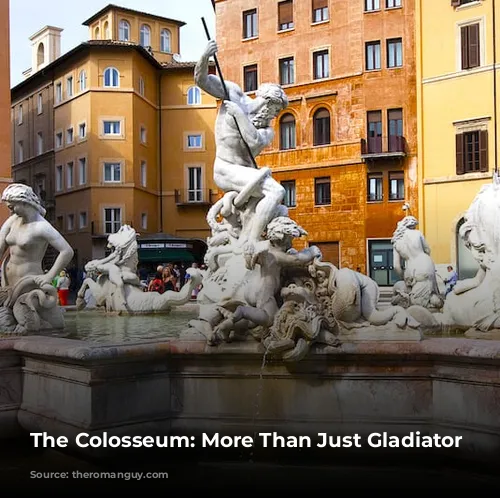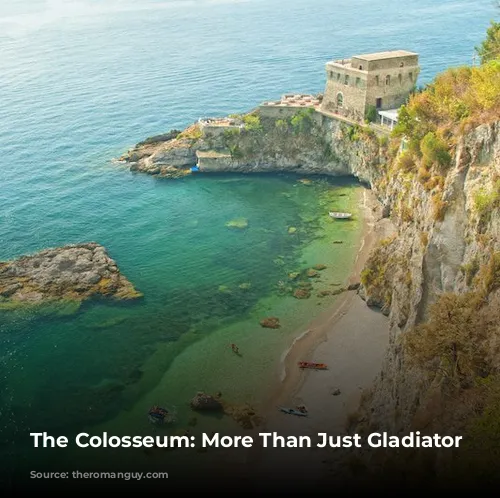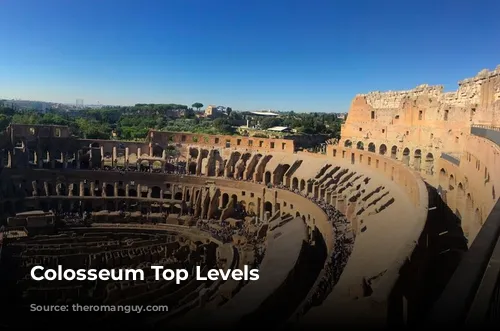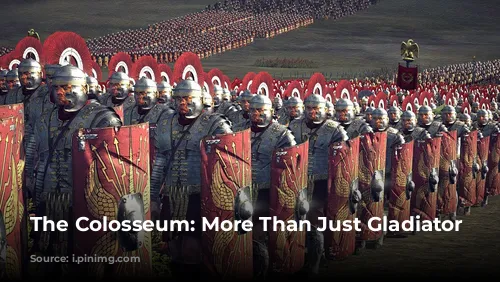The Colosseum is famous for its gladiator fights and arena battles. But did you know the Romans also transformed it into a temporary lake for epic naval battles? In this article, we’ll unravel the mystery of how the Romans flooded the Colosseum, bringing the sea to the heart of Rome.
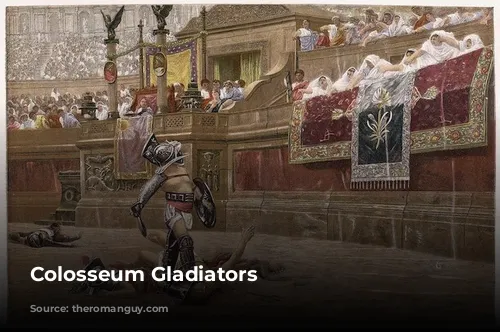
The Colosseum: A Multifaceted Venue
The Romans were known for their extravagant love of entertainment. The Colosseum, a symbol of Roman power, was a place for spectacle and thrills. While gladiator fights were a staple, they were only one part of the Colosseum’s repertoire.
Naumachiae: The Birth of Colosseum Naval Battles
The tradition of staged ship battles, known as naumachiae, began in 46 B.C. with a massive celebration honoring Julius Caesar’s return from conquering Gaul and Egypt. This grand event involved a specially constructed lake near the Tiber River, showcasing a sea battle with dozens of ships and thousands of combatants.
The Colosseum, upon its completion, was the perfect setting for a naumachia. To celebrate its grand opening, Emperor Titus ordered the Colosseum to be flooded, creating a temporary lake within the arena. Flat-bottomed ships were designed to navigate the shallow water, replicating famous battles like the conflict between Athens and Syracuse. The Colosseum even featured an artificial island for sailors to land and fight.
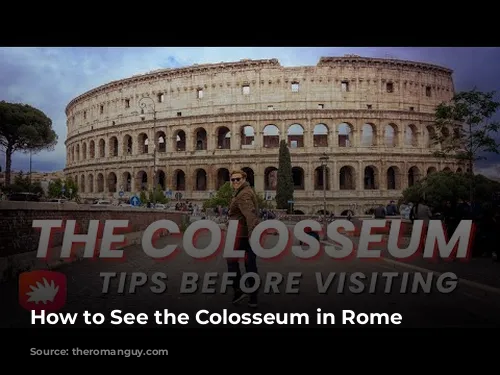
The Colosseum Naval Battles: A Spectacle of Illusion?
While the feat of flooding such a large space is impressive, historians believe that actual naval maneuvers may have been limited. The Colosseum’s small size made it difficult for ships to engage in realistic warfare. It’s likely that props were used to represent the ships, creating an illusion of grand naval battles.
The Colosseum’s Last Naval Battle: A Legacy Lost
The last documented naumachia at the Colosseum occurred in A.D. 89, orchestrated by Emperor Domitian. These events were rare and expensive, requiring a large workforce and skilled engineers to create the arena, seating, and ships. The cost and logistical challenges eventually led to the decline of naumachiae.
The Colosseum’s Naumachiae: The Human Cost
In a tradition typical of the Roman era, prisoners and condemned individuals were often used as fighters in the naumachiae, called Naiunachiarii. They were forced to fight to the death, often with no chance of survival, except for the possibility of imperial clemency. Thousands of rowers also participated in these events.
The Mystery of the Colosseum’s Flooding: A Lost Art?
Flooding the Colosseum quickly and efficiently was a technical challenge even for the Romans. Historians debate how they achieved it, with some questioning whether naumachiae even occurred at the Colosseum.
Ancient writings suggest that the Colosseum could be flooded for the naumachiae. However, the construction of the hypogeum, a network of tunnels and storage rooms beneath the floor, made flooding more difficult. This lack of evidence makes it hard to confirm how the Romans managed to transform the Colosseum into a temporary lake.
The Verona Amphitheater: A Glimpse Into the Colosseum’s Past
The Verona Amphitheater, with its similar design to the Colosseum, provides clues on how the flooding might have worked. It features a basin connected to two conduits: one for filling the basin from an aqueduct, and the other for draining water into a nearby river.
The End of an Era: The Colosseum’s Naumachiae Fade Away
Arena-based naumachiae gained popularity due to their lower cost, but they lacked the grandeur of the lake-based events. Roman audiences, seeking more intense spectacles, turned to gladiator fights and other bloodsports. The empire’s financial troubles in the third century further hampered the ability to stage these extravagant events.
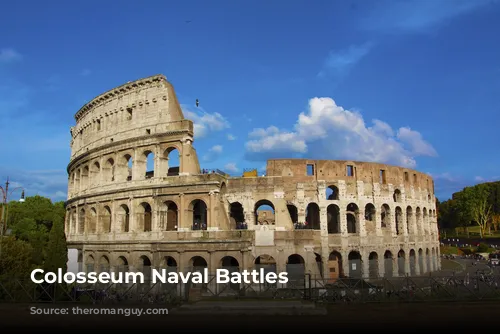
The Legacy of the Colosseum’s Naval Battles
The naumachiae at the Colosseum serve as a reminder of the Romans’ love for spectacle and their ingenious engineering skills. They provide a glimpse into the grandiose events that once took place within the Colosseum’s walls, showcasing the power and imagination of Roman society.

